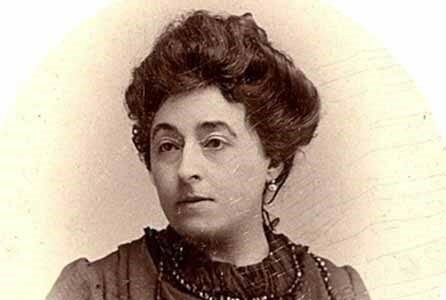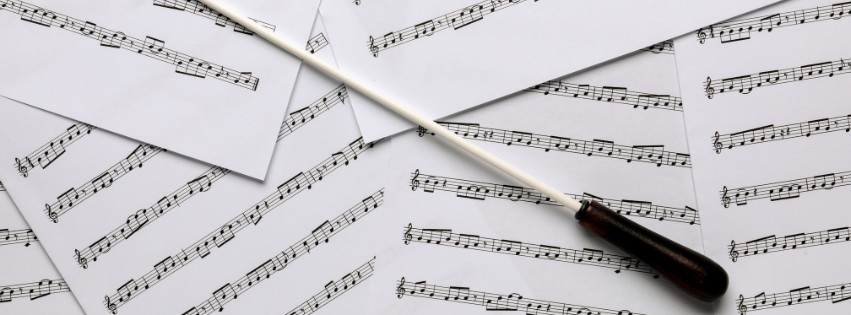A celebrated and recognized composer for her genius and strong personality during her lifetime, Rita Strohl (1865-1941) fell into oblivion after her disappearance, as was the case for so many women composers. In recent years, thanks to the commitment of musicologists and musicians to rediscover our musical heritage, we can rediscover the captivating work of this great composer.
A childhood immersed in the arts
Born Aimée Marie Marguerite Mercédès Larousse-La Villette on 5 July 1865 in Lorient, Rita Strohl grew up in an artistic environment. Her father, Jules Larousse-La Villette, was a naval infantry lieutenant with a passion for the cello, and her mother, Élodie Jacquier, was a highly talented painter who exhibited at the Paris Salon. Like many women composers, Rita grew up in an environment where art and creativity were at the heart of everyday life.
She began her musical training with her mother, a talented pianist, who gave her her first lessons. Her entry into the Paris Conservatoire at the age of thirteen did not seem to enchant her. She had a very headstrong personality. She preferred to compose rather than attend classes. Her « Dictionnaire humoristique des instruments » (« Humorous dictionary of instruments ») bears witness to her corrosive sense of humour and the poor impression the Conservatoire left on her:
‘Piano: a well-known instrument to whom we owe many martyrs. These martyrs are divided into two categories: the ‘listened-to’ and the ‘listeners’. The first category consists of students at the Conservatoire, and the second of the composers who have the misfortune to live just above or below them.‘
(Rita Strohl, Humorous dictionary of the instruments, quoted in the booklet of the box set: Rita Strohl : Vol. 1, La Boîte à Pépites)
Despite some unflattering comments from her teachers on her report cards in her early years of study, she eventually stood out in her later years at the Conservatoire, receiving praise for her exceptional musical gifts.

Composing and mothering
In the 1880s, on graduating from the Conservatoire, she took her first official steps into the world of composition with her Premier Trio, followed by the String Quartet and the Quintette-Fantasy. She also composed a lyrical symphony on Joan of Arc, a work that unfortunately met the same fate as the heroine who inspired it. At the beginning of her career, her musical language was inherited from Romanticism.
Married to Émile Strohl in 1888, she soon became a mother, but refused to sacrifice her career to her children, creating works such as the Second Trio in D minor, the dramatic Sonata ‘Titus et Bérénice’ and the Trio for piano, cello and clarinet ‘Arlequin et Colombine’.
But Strohl is far from being a pioneering feminist, as Héloïse Luzatti explains: « Her vision of femininity was characterized above all by gender stereotypes. In The Sex of Works, she describes the sensations of the artist as “delicate, developed, complex” when the artist is a woman, but “masculine, virile, solid” for a man. »
According to Rita Strohl, ‘Whether man or woman, the artist who works for Inspiration only reaches greatness when he unites in his work the two sexes of the Divine Archetype.‘
(Rita Strohl, « Le Sexe de l’Œuvre », cité dans le livret du coffret : Rita Strohl : Vol. 1, La Boîte à Pépites)
In 1898, a year marked by the birth of her last daughter, Marie-Louise, Rita Strohl turned to composition that was more in tune with the times. She declared that she wanted to « get in touch with the times ». Vocal works such as Bilitis, Les Cygnes, Carmen and Dix Poésies mises en musique bear witness to her musical evolution. Rita Strohl enjoyed great success as a melodist:
« Her first vocal pieces, which are counted among her most frequently published works, were played, reviewed and highly appreciated during her lifetime. In just a few years — essentially between 1894 and 1901 — she composed a collection of works constituting a sort of stylistic laboratory within which she used the contact with densely symbolist poems to forge her own style of harmonic writing for piano and voice. » (Héloïse Luzzati, Booklet of the box st : Rita Strohl : Vol. 1, La Boîte à Pépites)
The symbolist turn
At the beginning of the 20th century, the composer was moving towards a more symbolist musical language. In 1900, the sudden death of her husband deeply upset her. This shock led her to explore more complex forms imbued with mysticism. She began to explore the six-tone scale in her compositions, and created major works for orchestra, such as the Forest Symphony, the Sea Symphony and the Music on Water, all of which expressed her desire for communion with nature., autant d’œuvres qui expriment son désir de communion avec la nature.
She also felt the need to isolate herself: ‘My life had changed with no return. The hour of concentration on myself had struck. I thirsted for inner life, silence, and solitude, in order to allow the marvelous grains carried to me by the great winds of the Orient to germinate, grow and blossom in safety, in the sun, sheltered from storms. I left the world of artists. I retired into my Ivory Tower.’
(Rita Strohl, Notes for The Walker in the Sky, cité dans le livret du coffret Rita Strohl : Volume 1)
The adventure of La Grange
She then began building her « spiritual castle ». Rita Strohl withdrew from the world, despite the risks this represented for her career, and devoted herself to monumental compositions, which required huge orchestras, giving rise to cycles such as the « Christian Cycle », the « Celtic Cycle » and the « Hindu Cycle ».
With her second husband René Billa, a well-known glass artist known as Richard Burgsthal in 1908, Rita Strohl envisioned « La Grange » in Bièvres, Essonne, as a venue for hosting grand dramatic works. Burgsthal was a great admirer of Wagner, and the theater was designed as a small Bayreuth. However, the war and financial difficulties put a definitive end to this ambitious musical venture.
The Last Years
In 1931, extracts from La Femme pécheresse, a lyrical drama composed in 1913, were finally performed at the Lamoureux Concerts. However, her last years were marked by deep solitude, as, following her divorce and the sale of the La Grange theater, Rita Strohl spent her final years alone in Provence.
The composer passed away in 1941, leaving her works to her daughter Marie-Louise, who dedicated herself to copying the manuscripts left by her mother. And very quickly after her death, despite her exceptional musical contributions, Rita Strohl quickly fell into oblivion.
Rita Strohl left behind a considerable body of work, including chamber music, song cycles, orchestral works, and operas. It is only due to centuries of sexist prejudices that her work, like that of her women counterparts, has been forgotten, buried, and made invisible: ‘Although the position of women and the perception of female musicians in the Western world have evolved over the centuries, the deeply androcentric vision of our societies has maintained representations and stereotypes that have resulted in barriers up to this day, despite geographical differences, changes in political systems, thoughts, and mentalities.’ (Guillaume Kosmicki, Compositrices: l’histoire oubliée de la musique). It is high time her music finally emerged from the shadows!


Laisser un commentaire